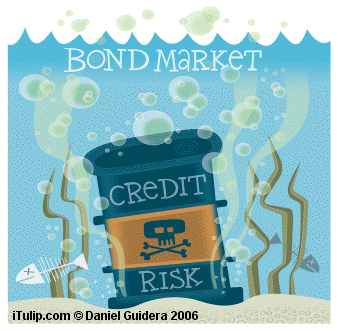 |
What Subscribers say about iTulip Select:
What iTulip members say. Not paid for and, no, members quoted are not personal friends or family members.
"For those who know me, I'm not a butt patter. I speak my mind and I never have a problem being contrary to the local powers that be.
"I am also not a gold bug. Even if fiat money falls, I don't necessarily see gold as the correct alternative. I am also not much of a bear, being generally optimistic about how things will turn out. However..
"Credit has to be given where credit is due. Things are playing out very closely to how Eric laid it all out. He predicted economic crisis around complicated leveraged funds and he was right.
"Of course, a lot of people called that, but Eric took it a step further and put himself squarely behind what's happening now. He predicted Ka, which with a 40% chance of 4.25 fed funds in December, looks like it's starting to happen precisely as he described.
The story isn't over yet, and I'm not sure Gold is the correct "poom" investment, but I can tell you that when Eric speaks, I'm certainly listening a lot more carefully these days." (See details here.)
- bazespinnaker, August 31, 2007
____
I can hardly believe how many analysts, newsletter writers, bloggers, etc., I read on a daily basis who are trying to draw your attention now to the fact that they called the top in the real estate market in June 2005. Get over yourselves. What do you expect the masses to do now, follow your advice for a nominal fee?
Listen to me now and hear me later.
In my opinion there is only one place that had the jump on all of these prognosticators and that is iTulip.com. Everyone else is lining up, hind tit, if you will, to Eric Janzsen who has done some excellent analysis on the end times, so to speak. Make iTulip a daily read if you haven’t already.
Uncle Jack (See details here)
____
"It's eerie how, when the iTulip staff make a conjecture, mainstream economists dismiss it as paranoid fantasy. Then, like clockwork, about a year later, mainstream economists start seeing the clues that the iTulip staff saw long ago." (See details here.)
- necron99
____
"We work together here at iTulip on ways to preserve capital and weather the next storm until the sun comes out, to explore and hash over the details to develop strategies to get in front of the next bubble to capture new opportunities to come. Researching, analyzing, arguing, agreeing, and executing as an iTulip Team. Thanks for all the input, I do learn a lot from this site."
- Bill
____
"I was an early reader of iTulip, and the early gold essays played a pivotal role in opening my PM position in 2000. Indeed, my initial Au purchase nailed the bottom within a couple of dollars. Over the years I've built the PM position into nearly 50% of my portfolio, but I owe quite a bit to that early kick from iTulip."
- press250
Unique content only available on iTulip Select includes:
Janszen Commentaries
- Full access to new commentaries such as Recession 2007, No Deflation! Disinflation then Lots of Inflation, and The Coming End of the US Foreign Investment Bubble (12 per year)
- Full access to in-depth interviews with industry experts, such as Asia investing and commodities guru Jim Rogers; Wall Street pundit Rick Ackerman; banking expert Martin Mayer; Wall Street financial analyst and Distinguished Research Professor of Economics at the University of Missouri Dr. Michael Hudson; CEO, Dynamic Credit Jim Finkel; and creator of the movie and author of the book "Maxed Out," James Scurlock; Dean Baker, co-director of the Center for Economic and Policy Research in Washington, DC;John Challenger, CEO, Challenger, Gray & Christmas (12 per year)
- Full access to specialist commentaries such as John Serrapere, Investment Analyst & Strategist - Foster Holdings, Inc., and Sean O'Toole, Real Estate Expert President ForeclosureRadar, Inc. (24 per year)
- Reviews of books, including author interviews, such as Jim Rogers' Hot Commodities: How Anyone Can Invest Profitably in the World's Best Market
, Peter Warburton's Debt and Delusion: Central Bank Follies that Threaten Economic Disaster (Deluxe Edition)
, and James Cumes' America's Suicidal Statecraft: The self-destruction of super power
) (6 per year)
- Reports on trips, such as to Toronto and Los Angeles. Trips planned so far for 2007: Sept 2007, Las Vegas; November, San Francisco
- Model your portfolio through a Ka-Poom Theory event with our web-based portfolio modeling tool (beta test now in progress)
- Full access to View ShadowFed Forum, including Actionable Hedging Strategies
- Relevant News Events and Discussion by Subscribers
- Full access to archives
About iTulip Select
 |
 |
 |
 |
 January 1999 "...the place to go for a contrary view of the markets."
January 1999 "...the place to go for a contrary view of the markets."








What iTulip Does Not Do
iTulip will not promised to make you a millionaire in five easy steps.
iTulip will not tell you which stocks to buy or sell today for guaranteed returns.
iTulip will not lecture you on efficient market theory. We don't believe in Santa Claus or the Easter Bunny, either.
What iTulip Does
"Buying and holding is far from the sure thing it's made out to be. It works in bull markets. It works if you invest regularly, in dribs and drabs, catching the ups and downs along the way. It works in mild bear markets, when the declines are quickly reversed. It may work if you've got twenty years to wait for stock to recover from a half-off sale. Otherwise, it's risky. It's very risky when you're holding stocks you bought at extravagant prices. It's extremely risky when your retirement depends on a positive result and you're planning to take up golf in a decade or less."
- John Rothchild
"It is my guiding confession that I believe the greatest error in economics is in seeing the economy as a stable, immutable structure."
- John Kenneth Galbraith, A Journey Through Economic Time (1994)
"I'd be a bum on the street with a tin cup if the markets were efficient."
- Warren Buffett
iTulip is about understanding the economy and financial markets of our times for what they are: mutable manifestations of a complex and ever-changing global political economy. iTulip is about the macro economic and market environment, rather than the micro, both with respect to geographic scale–global–and in time frame–centuries.
In the worlds of economics and finance, there is nothing knew under the sun, yet no two periods are alike. The art is in seeing which history applies to the present and which does not.
iTulip is about identifying major trend changes in the economy and financial markets, as driven by sentiment, stages of development which tend to follow each other, government involvement, and the financial interest of various economic and political constituents.
The Contrarian Credo
"Most people get interested in stocks when everyone else is. The time to get interested is when no one else is. You can't buy what is popular and do well."
- Warren Buffett
That goes for bonds and commodities as well. In our current oddball All-Assets-Up period, the pickings for unpopular assets are especially slim.Contrarianism does not always mean going against the crowd. Contrary to popular belief, the crowd is sometimes right. Contarianism is about intelligent, measured, informed skepticism.
Major Themes
Themes that you will see touched on frequently on iTulip.com.
 |
iTulip was originally launched to track the rise and demise of the bubble in technology stocks in the 1990s. That bubble was followed by a real estate bubble. The real estate bubble will be followed by others. We expect the next bubbles to occur in Alternative Energy and Infrastructure. (As usual, you heard it here first.) In the iTulip Select area we track the genesis and development of the alternative energy and infrastructure bubbles, from the early stages–agreement on language used to refer to the object of the bubble by investment banks and government policy makers–all the way through to terminal stages–global market participation. We are developing our Next Bubble Investment Thesis now, accessing sources ranging from venture capitalists, to entrepreneurs, to academic leaders in the alternative energy industry. (We're not sure this bubble is such a bad idea.)
 |
Refers to the loss of accountability by those who lend and those who borrow in the FIRE Economy. The consequences of excessive debt taken on by US households and the US government have been put off for so long that the US economy has become distorted beyond recognition. Foreign central banks have extended, and US politicians gladly accepted, credit which has resulted in debts which cannot, and will not, be repaid, at least not with dollars that have the purchasing power of current dollars.
 |
The banking industry has over the past ten years via securitization externalized the costs of credit risk inherent in the making risky loans much as the chemical industry externalized the cost of manufacturing toxic chemicals in the 1960s. Eventually, these costs will be born by society, and paid for by taxpayers. The miracle of securitization is a one time event, representing a finite period of development in lending. After the Credit Superfunds are created to clean up global Risk Toxins, credit will become more expensive as banks come to bear the full cost of credit insurance (derivatives). A period of relatively high interest rates and sub-par economic growth will follow.
 |
The rise of global capitalism promises greater opportunity for more of humanity than has ever existed in human history. However, the success of totalitarian capitalism in China and the rising concentration of wealth and political power in capitalist democracies in the West raises serious questions. The evolving economic and political relationship between the capitalist dictatorship of China and the capitalist democratic republic of the USA is where the rubber meets the road as the global economy enters a period of structural transition.
Other aspects of our time which we feel will influence our economic future:
- Unprecedented levels of household debt. You have heard this before, but this fact will be highly significant in the next major demand failure driven recession.
- Historically high levels of public debt, especially foreign, relative to GDP. You have also read about this. Today's high foreign debts are tomorrow's high taxes, inflation, and interest rates.
- An outdated global monetary system designed for an earlier time when the global economy was US-centric and becoming more so. It is subject to the same kinds of strains as the UK-centric system in the 1920s. Efforts by US trade partners, such as Japan, China, and oil exporters, to maintain the system will eventually fail, just as the effort by the US to maintain the UK-centric system eventually failed. The transition to a new system, historically, has been economically and politically treacherous.
- Distribution of wealth, that is, savings concentrated in a small number of households. These are reaching levels not seen since the 1920s. As a starting point, poor wealth distribution poses serious political risks to capitalism in a serious demand failure driven recession or depression that may follow our current period of excessive private and public debt.
iTulip has a record going back to 1998 for calling the most significant economic and financial market events since then–as noted by the financial press, above. In retrospect, these appear obvious but were heretical when they were made, as they went against the prevailing mood and beliefs of the times.
- November 1998: Warns on Internet Bubble
- August 1999: No Y2K Disaster
- November 1999: How the Internet Bubble Will End
- March 2000: Internet Bubble Top
- April 2000: A Bear Market is Born
- January 2001: Post-Bubble Recession
- September 2001: Gold Price Bottom at US$270
- August 2002: Warns of Housing Bubble
- January 2004: How Housing Bubble will End
- January 2005: Housing Bubble Correction
- June 2005: Housing Bubble Top
- October 2006: Recession Q4 2007
- July 2007: Before the Stroke of Midnight
- December 27, 2007: Start of Debt Deflation Bear Market
Sign up for iTulip Select here. (If you are not a registered iTulip Community Forum user, please register first.)
The Framework: Ka-Poom Theory
We call our framework "Ka-Poom Theory." It refers to the cycles of monetary disinflation and re-inflation (reflation) which have occurred in major and minor episodes since the 1920s but which have taken on a more extreme character since the world's reserve currency, the US dollar, was de-linked from gold in 1971, and the growth of the finance-based economy since 1980.
iTulip developed "Ka-Poom Theory" in 1999 to guide the timing of investment decisions for Osborn Capital, the seed stage venture capital firm founded by Jeffrey Osborn. iTulip founder and President Eric Janszen served as Managing Director of Osborn Capital from 1998 until 2001. Osborn Capital experienced seven positive liquidity events out of 20 investments and sold its equity interest in those companies before the technology stock bubble collapsed.
Principles of Ka-Poom Theory circa 1999:
- Since 1971, the Bubble Cycle has replaced the business cycle as the primary driver of economic growth and contraction "cycles" in the global economy
- Governments which develop large external debts do not pay them back but rather eventually are forced to choose between the lesser of two evils, default via bankruptcy or via depreciation
- Faced with a choice between the economic and political consequences of default via bankruptcy or depreciation, governments always choose the latter over the former
- No two economic periods are alike, although elements of past periods tend to recur due to the tendency of governments and markets to behave in predictable ways
- The dollar depreciation default will be self-reinforcing, and caused by the repatriation of dollar denominated assets
- Before this eventual, one time write-off of government debt, several smaller, less extreme Ka-Poom disinflation-reflation cycles will occur
- Sell stocks in April - August 2000
- Buy US Treasury bonds
- Buy precious metals in 2001
- Central banks will do anything, including allow the formation of a macro-economically dangerous housing bubble, in order to avoid a self-reinforcing asset-price deflation.
- Foreign central banks will purchase US dollar denominated assets against their own long term national economic self interest in order to support the current US-centric international trade and currency regime.
- Writing in April 2007, this post-crash reflation period shares more in common with the 1937 post crash reflation period than with any other, although it has elements of the 1970s and late 1980s reflation periods, notably the energy price bubble of the late 1970s and the LBO bubble of the late 1980s, as well as the 1999 period
First follow Nature, and your judgment frame
By her just standard, which is still the same;
Unerring Nature, still divinely bright,
One clear, unchanged, and universal light,
Life, force, and beauty must to all impart,
At once the source, and end, and test of art.
- Alexander Pope (1688–1744)
 |
You will come across various favors of Ka-Poom Theory today, eight years after iTulip conceived it. Likewise various flavors of the concept of Risk Pollution and what it means.
Our theory says that the most toxic credit risk will ooze out of the financial markets first, the way PCBs started to show up in drinking water in the 1970s. Risk toxins tend to concentrate in the most vulnerable parts of the financial system, much the way DDT concentrated in the most vulnerable part of the ecosystem. Risk toxins will tend to appear first among the weakest members of society, the poor and uneducated. The problems we are now seeing in the sub-prime market were predicted by Risk Pollution. More importantly, iTulip's theory of Risk Pollution predicts that it is only a matter of time before credit risk toxins begin to show up all over the financial markets, followed by a reversion of the currently inverted return on risk curve, resulting in higher interest rates and credit contraction. The government "Credit Toxin SuperFund" will take the form of unprecedented global central bank intervention in economies and financial markets at some point over the next few years.
Philosophy: Transparency
Many if not most finance and economics sites make a half dozen predictions, delete the 50% that turn out to be either mostly inaccurate from their servers, and claim that the 50% that remain on the site, which turned out to be mostly right, are proof of prescience. The reason this works is that hardly anyone has the time or inclination to check to see what was actually said and compile the results.
Several sites, for example, deleted the pages where they made a prediction of catastrophe due to Y2K (we predicted a nothing was going to happen). As an example of an issue that we identified many years ago and about which we have learned to be patient, iTulip has been tracking the decline of the dollar since 1998 while resisting the temptation to predict its imminent collapse, which many sites have been doing for years. We predicted a recession in 2001 based on this analysis. On balance, the estimate was more accurate than not, and so was useful. We hope our prediction of a end of year 2007 recession will be equally useful.
Every piece of analysis and prediction iTulip has ever made since 1998 is still on the site. By keeping all of our past analysis–the good, the bad, and the ugly–here we give our readers a honest view our our thought process so they can decide for themselves whether our methods work or not.
Sign up for iTulip Select here. (If you are not a registered iTulip Community Forum user, please register first.)
Long Term View
"The only thing men learn from history is that men learn nothing from history."
- Hegel
iTulip was founded in 1998. Research for the site started in early 1997. The site has therefore been around for about a decade. It takes about a decade to learn how to hear the signal in the noise in the economic and financial system, and we are always learning. Our long perspective helps us tell when events that may appear to be significant are not, and other events which appear to be insignificant are in fact momentous. The Investment Thesis
Successful venture capital firms do not wait for entrepreneurs to explain new markets to them at the time they are presenting business plans or pitches new companies. The most successful VCs develop an investment thesis that predates and predicts the development of new companies which arrive to take advantage of the opportunity, so that these can be evaluated within a framework that predicts how the market is likely to develop, and suggest what the ideal company might look like well before the first start-up to go after that market walks through the door with a business plan. iTulip Select subscribers will gain access to iTulip's Investment Thesis as it is developed.
How iTulip Learns
iTulip learns from its community of more than 8,000 registered iTulip Community Forum members. A look at independent demographic analysis from QuantCast shows a 50% higher proportion of visitors to iTulip have a post-graduate education than is represented in the overall Internet user population. New members joining us on any given day arrive from institutions as diverse as the FDIC, Rutgers University, an investment bank in Singapore, the US State Department, a hedge fund in Canada, a bank in Argentina, home builder in California, an oil company in Russia, an environmental firm in the UK. As many as 11,412 guests and members have been on our forum at one time.
This highly intelligent, thoughtful, and diverse group continuously challenges and expands our understanding of our economic world.
The other way we learn is by going to the source. Rather than speculate on how the CDO market for mortgages works, we interview Jim Finkel, CEO of Dynamic Credit, LLC, a firm that packages CDOs for hedge funds and bond portfolios. Instead of taking the short cut of reading someone else's idea of where the commodity market is going and reporting it back to readers, we interview commodities guru Jim Rogers. We have our own economic theories, and have interviewed dozens of professional economists across the political and theoretical spectrum. These include:
- Martin Mayer, Guest Scholar in Economic Studies at the Brookings Institution, is an expert in Banking, investments, markets, money.
- James K. Galbraith, teaches economics and a variety of other subjects at the LBJ School, University of Texas, Austin
- Dean Baker, co-director of the Center for Economic and Policy Research
- Jim Rogers, Wall Street commodities and currency expert
- Peter Morici, University of Maryland business school professor and former chief economist of the U.S. International Trade Commission under the Clinton administration
- Kevin Hassett, director of economic policy studies at the American Enterprise Institute
- Lakshman Achuthan, managing director of the Economic Cycle Research Institute and a governor of the Levy Economics Institute at Bard College
- James O’Sullivan, a UBS economist
- Ken Goldstein, an economist with the Conference Board
- Russ Roberts, a professor of economics at George Mason University
- Ron Blackwell, chief economist of the AFL-CIO
- Dr. Richard Curtin, director of the Surveys of Consumers at the University of Michigan
- Dr. Michael Hudson, Wall Street financial analyst and Distinguished Research Professor of Economics at the University of Missouri (Kansas City)
As a unique service for iTulip Select subscribers, we encourage them to suggest questions to ask our interviewees before the interview, so that subscribers have a chance to get specific questions answered by an industry expert.
Add it all up–the nine year span of iTulip's experience, a broad historical and geographic perspective, a framework with established predictive value for evaluating changes in the markets and economy, access to experts who are asked the right questions, and thousands of world-class thinkers among its community members–it is not surprising that iTulip has a strong record for foreseeing major economic and financial markets events.
About the Founder
iTulip's unique approach to economics and finance was developed by its founder, Eric Janszen. The son of physicist and inventor Arthur A. Janszen and psychologist Pearl Janszen; graduate of the University of Massachusetts with a Bachelor of Science degree in Resource Economics; Eric Janszen's career in high technology includes executive management roles in engineering, product marketing, and sales; CEO of two venture-backed companies; and managing director of seed-stage investment firm Osborn Capital. Janszen brings the entrepreneurial spirit of a tech company founder and manager, the financial experience of a venture capitalist, and college training in journalism and economics to the world of contrarian economics and financial market thinking (full bio here).